BLUE Ocean Film Festival 3D wrap-up
Although I missed the 3D panel discussion at this year’s BLUE Ocean Film Festival, I did arrive at the festival in time to check out the various 3D offerings in the exhibit hall. BLUE also commandeered the local Cannery Row IMAX theater to show a bunch of underwater 3D (and 2D) IMAX films. In 3D, participants of BLUE were able to see Ultimate Wave Tahiti 3D and Under the Sea 3D. It was indeed a true luxury to have so many underwater IMAX films available for viewing at once.
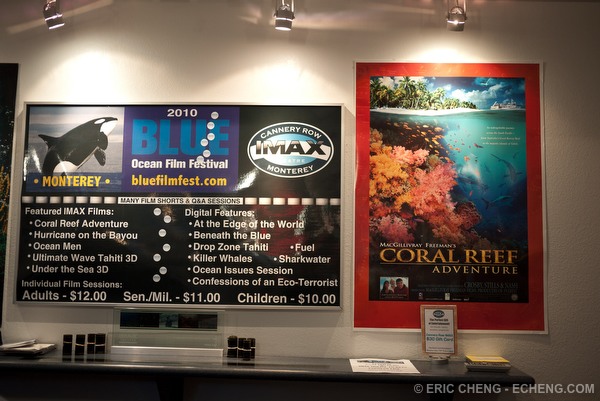
Cannery Row IMAX theater at Monterey, showing BLUE films, a few of which were in 3D
At the exhibition hall, Panasonic showed re-converged Blu-ray versions of Howard and Michele Hall’s IMAX films (Deep Sea 3D and Under the Sea 3D) on a 50” 3D television. The small portion of the Blu-ray I saw had quite a few prolonged stereo window violations (objects in front of the stereo window that touch the edge of the frame), but I’m told that the majority of the film looks good. The 3D Blu-ray versions of the two films aren’t available yet, but will be given away for free to folks who purchase LG or Sony 3D products.
Deeper in the exhibit hall was an annex room featuring video products sold and produced by Backscatter, Gates, Amphibico, and Light & Motion. Unfortunately, the room was hard to find, and there weren’t any signs notifying people that the booths could be found there – an issue that will be corrected next time, I’m sure.
John Ellerbrock of Gates showed off an early-stage prototype housing for Panasonic’s AG-3DA1 3D HD camcorder. Tommy from Panasonic had been at the 3D panel discussion with an actual camera, but I didn’t get to see it.
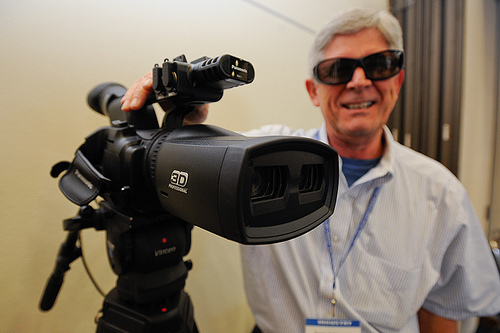
Tommy, from Panasonic, stands with a Panasonic AG-3DA1 3D camcorder
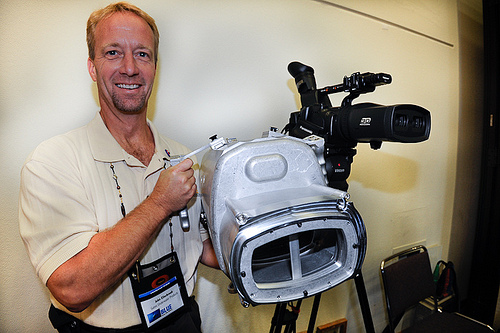
John Ellerbrock of Gates Underwater Housings with prototype housing for Panasonic AG-3DA1 3D HD camcorder
I applaud Gates for jumping into the 3D fray with a housing for the first 3D camcorder. None of the initial single-camera 3D offerings seem to support wide-angle solutions, but the cameras should work well for small subjects underwater.
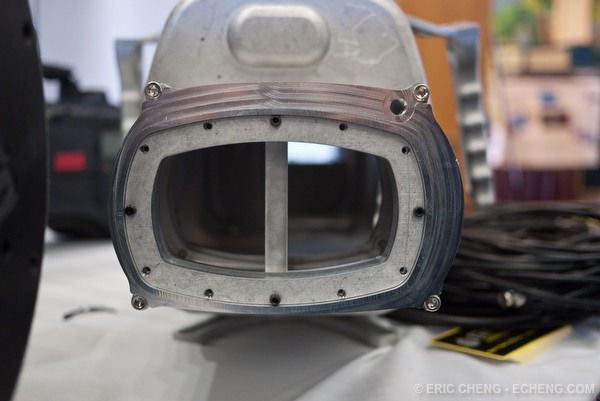
Gates prototype underwater 3D housing for Panasonic AG3DA1 3D camcorder
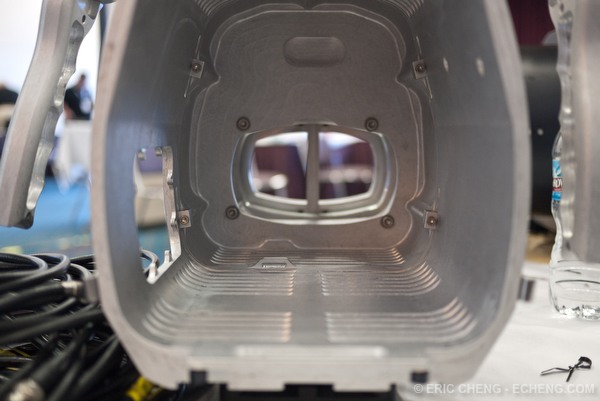
Inside of Gates prototype underwater 3D housing for Panasonic AG3DA1 3D camcorder
Amphibico surprised everyone with their demo of a 3D housing that holds two small consumer 3D camcorders. Although similar to the BS Kinetics housing that I use, the Amphibico rig goes much further because they managed to reverse-engineer Sony’s AVR remote protocols, allowing the control of all aspects of the camera without the use of IR blasters.
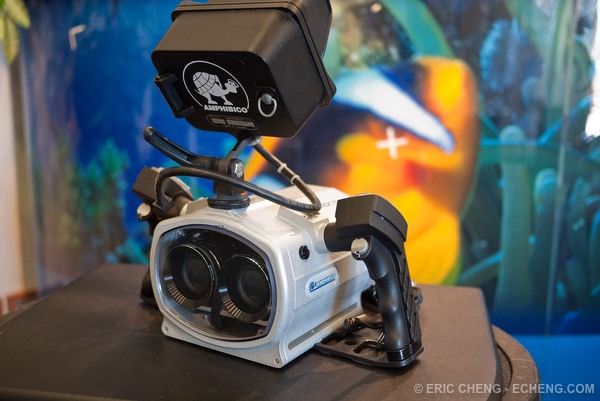
Amphibico’s prototype 3D underwater housing for dual Sony camcorders
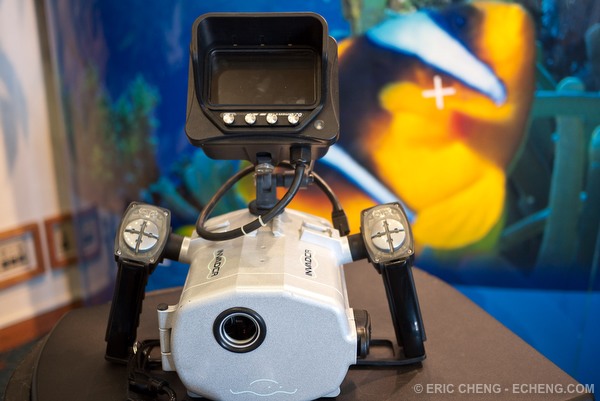
Amphibico’s prototype 3D underwater housing with custom monitor featuring convergence marks
Amphibico can even dynamically converge the cameras without physically re-aligning them, presumably through the control of internal floating lenses that are normally used for image stabilization. A modified viewfinder has an overlay with markers to assist in dynamic convergence: a cameraman simply holds a button down until the two cameras are converged to his liking. Amphibico says that they can converge the cameras, but they cannot force them to stay converged at that point. Similar to the clocks that control frame speed, the converged lens will drift over time. Amphibico said that the convergence remains roughly constant for “around 16 minutes” before they drift far enough to be a noticeable change.
Using red/cyan anaglyph glasses, I watched a demo of footage pulled straight from the cameras. The depth of the 3D video showed that the convergence works as advertised.
The entire package with monitor and cameras would cost around $8,000, but at the moment, there is no actual product that you can order. If you are interested, Amphibico may make a custom housing for you, but only one modified monitor currently exists, so you’ll need to contact them for more information.
I am absolutely certain that a diverse range of single-camera 3D solutions are just around the corner, but I doubt that wide-angle, single-camera solutions will be available for some time. Until then, we will have to continue shooting two-camera units with wide-angle lenses and hope that manufactures include genlock support for multiple-camera synchronization in lower-end cameras.